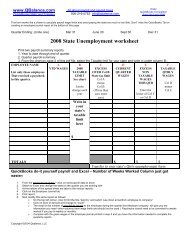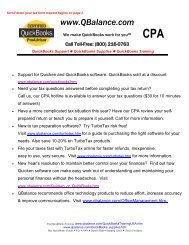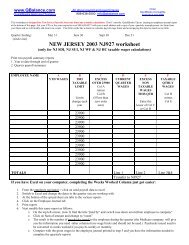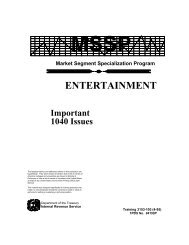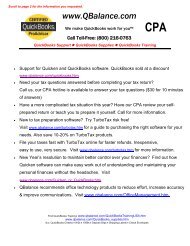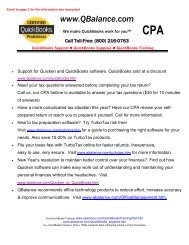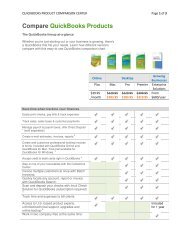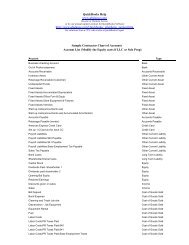Construction Industry - Audit Technique Guide - Uncle Fed's Tax ...
Construction Industry - Audit Technique Guide - Uncle Fed's Tax ...
Construction Industry - Audit Technique Guide - Uncle Fed's Tax ...
Create successful ePaper yourself
Turn your PDF publications into a flip-book with our unique Google optimized e-Paper software.
460(e)(2)(A) all trades or businesses (whether or not incorporated) whichare under common control with the taxpayer (within the meaning ofsection 52(b)),460(e)(2)(B) all members of any controlled group of corporations of whichthe taxpayer is a member, and460(e)(2)(C) any predecessor of the taxpayer or a person described insubparagraph (A) or (B), for the 3 taxable years of such personspreceding the taxable year in which the contract described in paragraph(1) is entered into shall be included in the gross receipts of the taxpayerfor the period described in paragraph (1)(B). The Secretary shallprescribe regulations which provide attribution rules that take intoaccount, in addition to the persons and entities described in thepreceding sentence, taxpayers who engage in construction contractsthrough partnerships, joint ventures, and corporations.The gross receipts test looks to the prior 3 taxable years rather than including the taxyear during which the contract was entered. This enables the contractor at thecommencement of the contract to know whether or not it must be reported using thepercentage of completion method, and can adjust the accounting system accordingly. Ifa taxpayer has been in existence for less than the three taxable years, the taxpayerdetermines its average annual gross receipts for the number of taxable years (includingshort taxable years) that the taxpayer (or its predecessor) has been in existence.Treas. Reg. § 1.460-3(b)(3) directs the taxpayer to §1.263A-3(b) to determine whatitems are included for this gross receipts test. Gross receipts are the totalamount, as determined under the taxpayer’s method of accounting, derived fromall trades or businesses. Gross receipts does not include (not all inclusive):• returns or allowances;• interest, dividends, rents, royalties, or annuities, not derived in theordinary course of a trade or business;• Receipts from the sale or exchange of capital assets.Explanation of a Controlled GroupTwo or more corporations whose stock is substantially held by five or fewer personscompose a “controlled group”. These groups include “brother-sister” controlled groups,parent-subsidiary groups, combined groups, and insurance companies. Members of acontrolled group are subject to related party transaction rules (i.e., income/deductionmatching and loss deferrals on sales between members).Example of aggregation of gross receipts for a controlled group:Mr. A is the sole shareholder of two corporations. Corporation A operates a roofinstallation business. Corporation B operates a grocery store. The gross receipts from3-3



